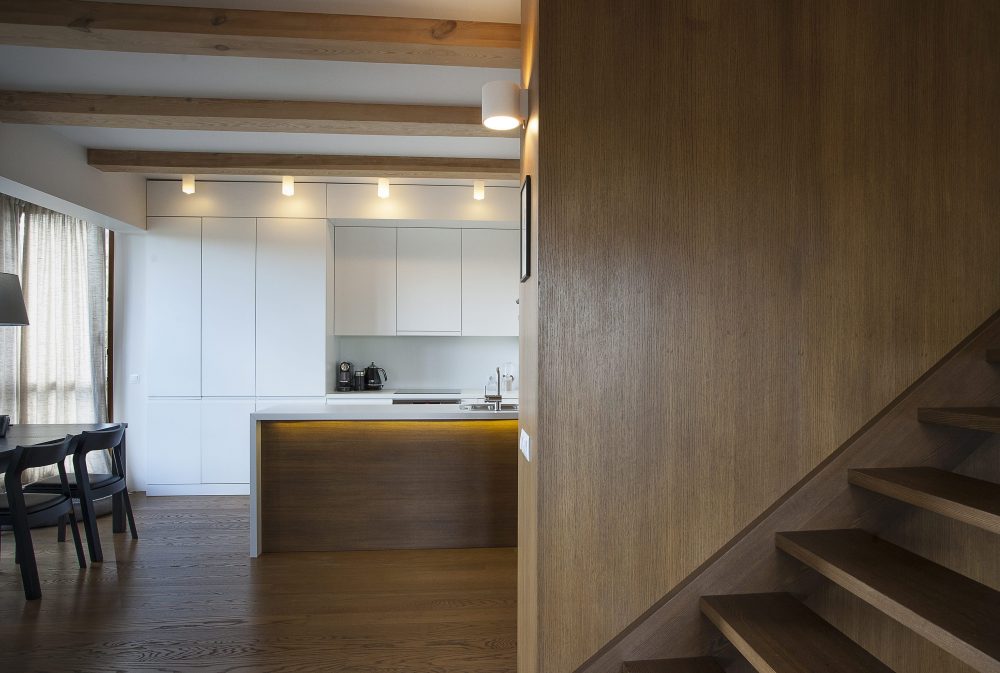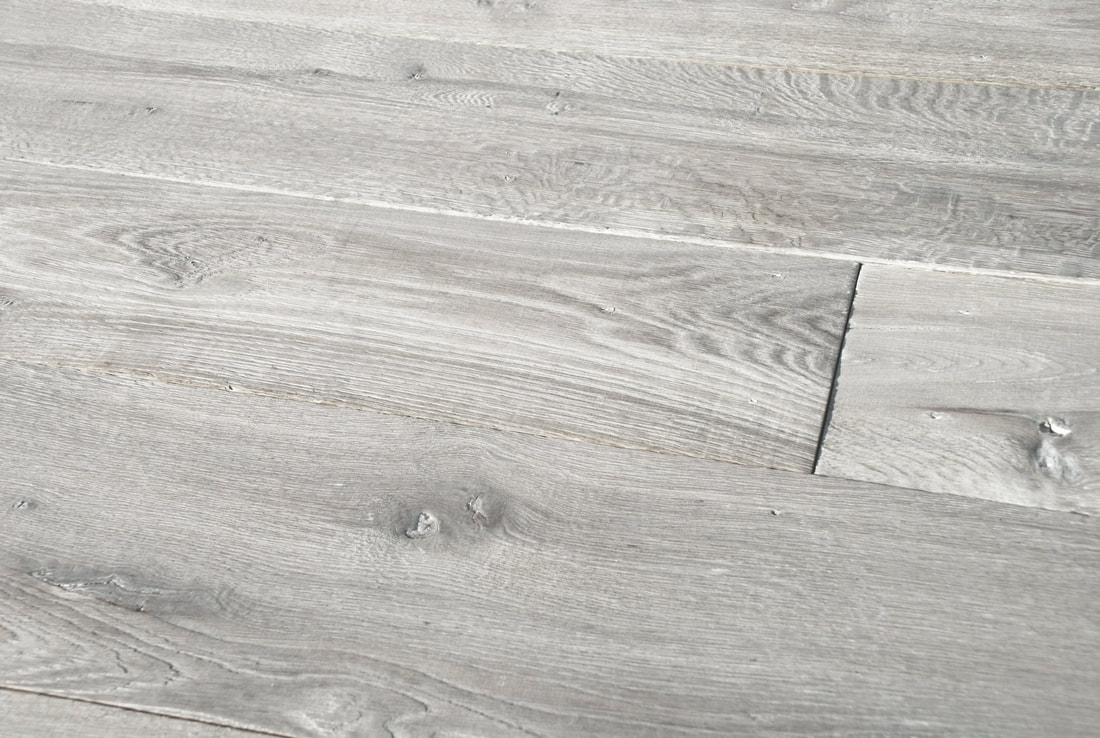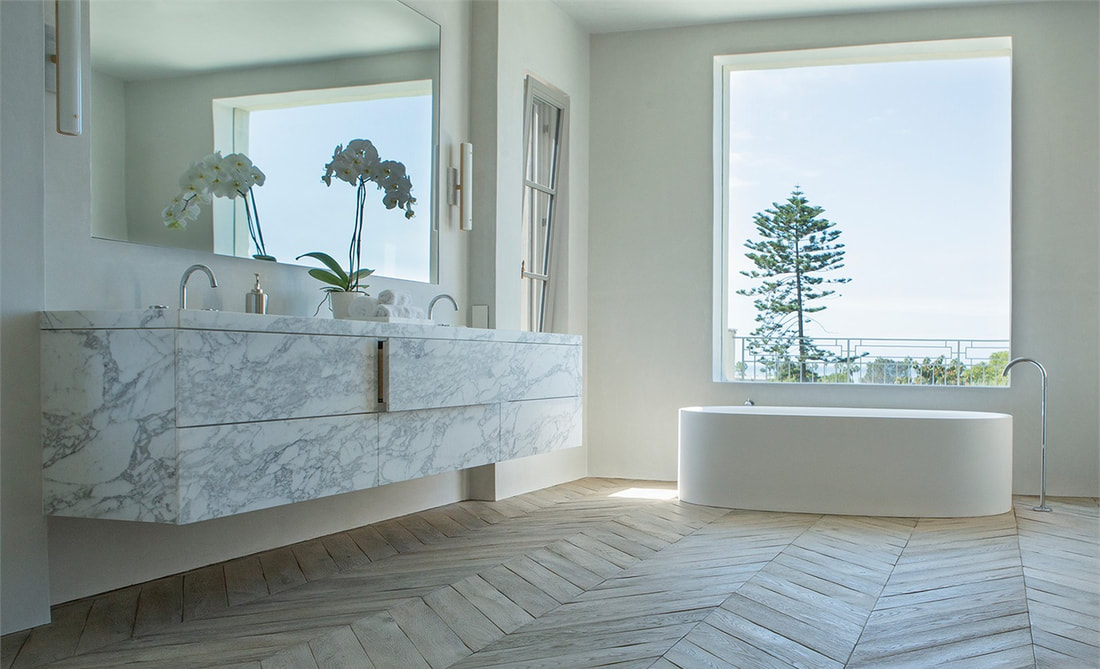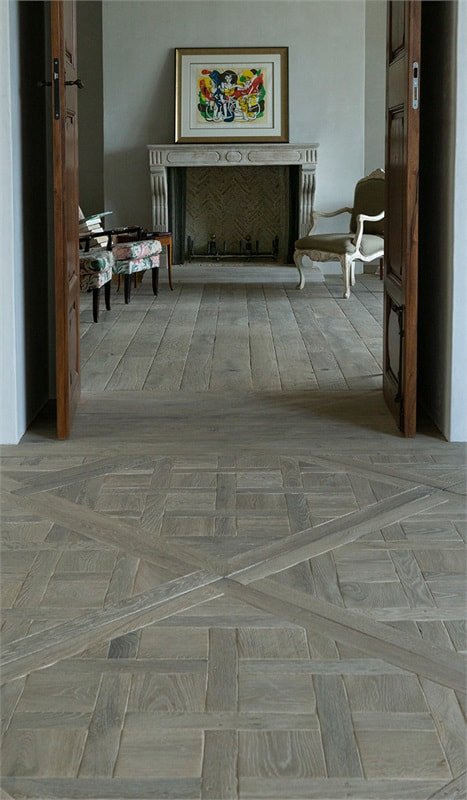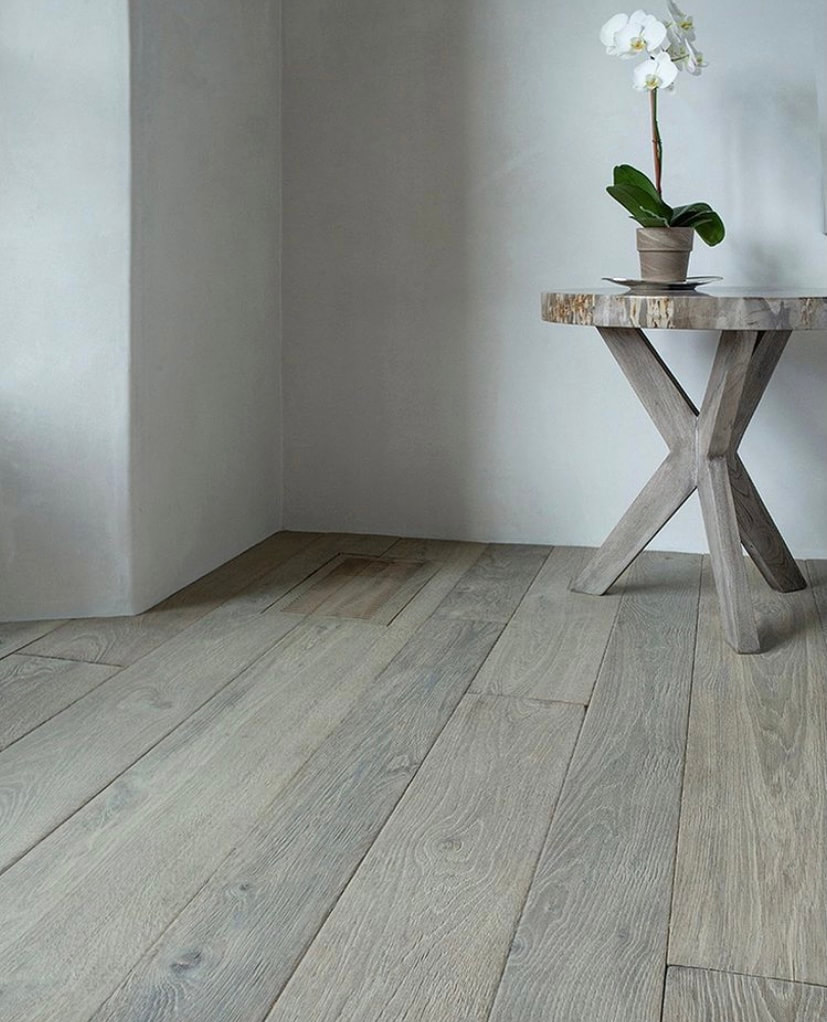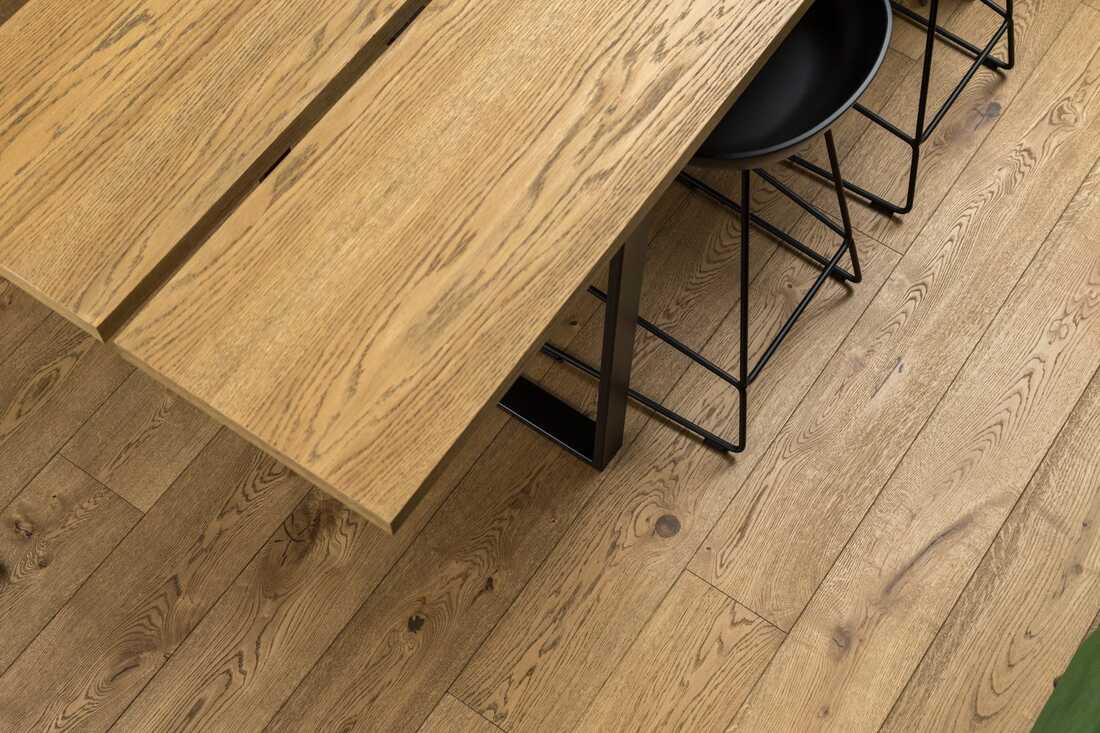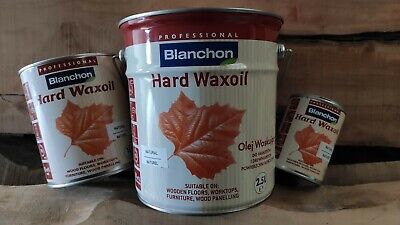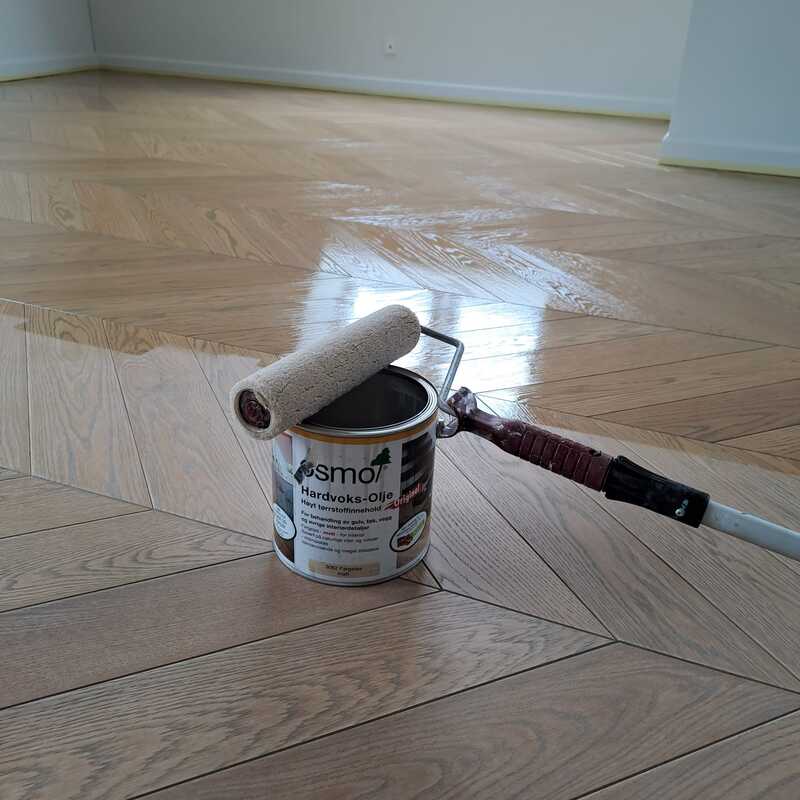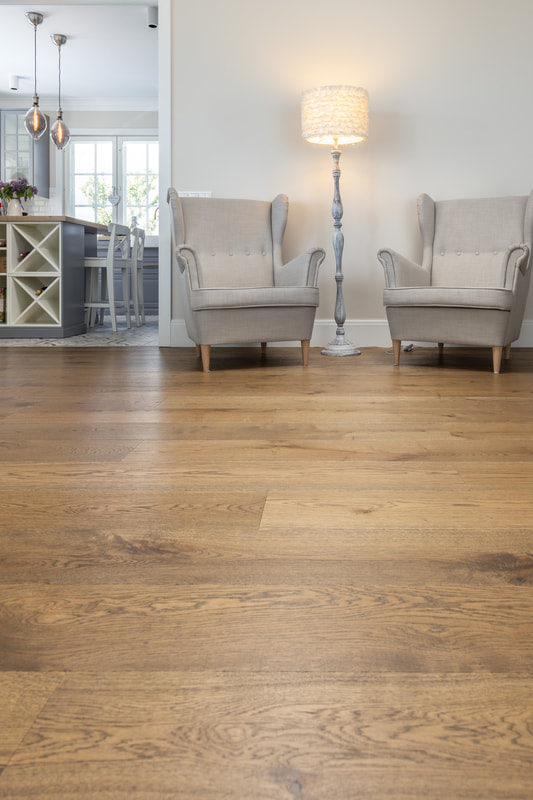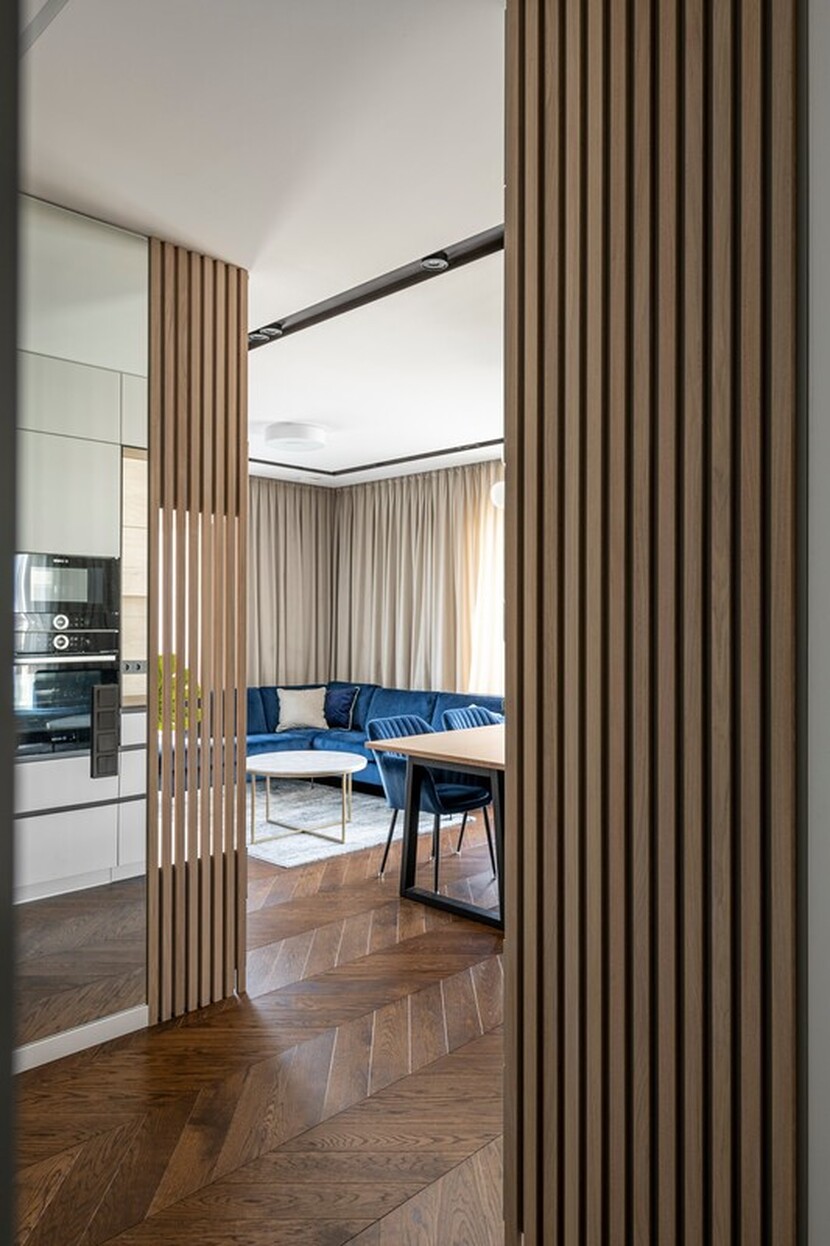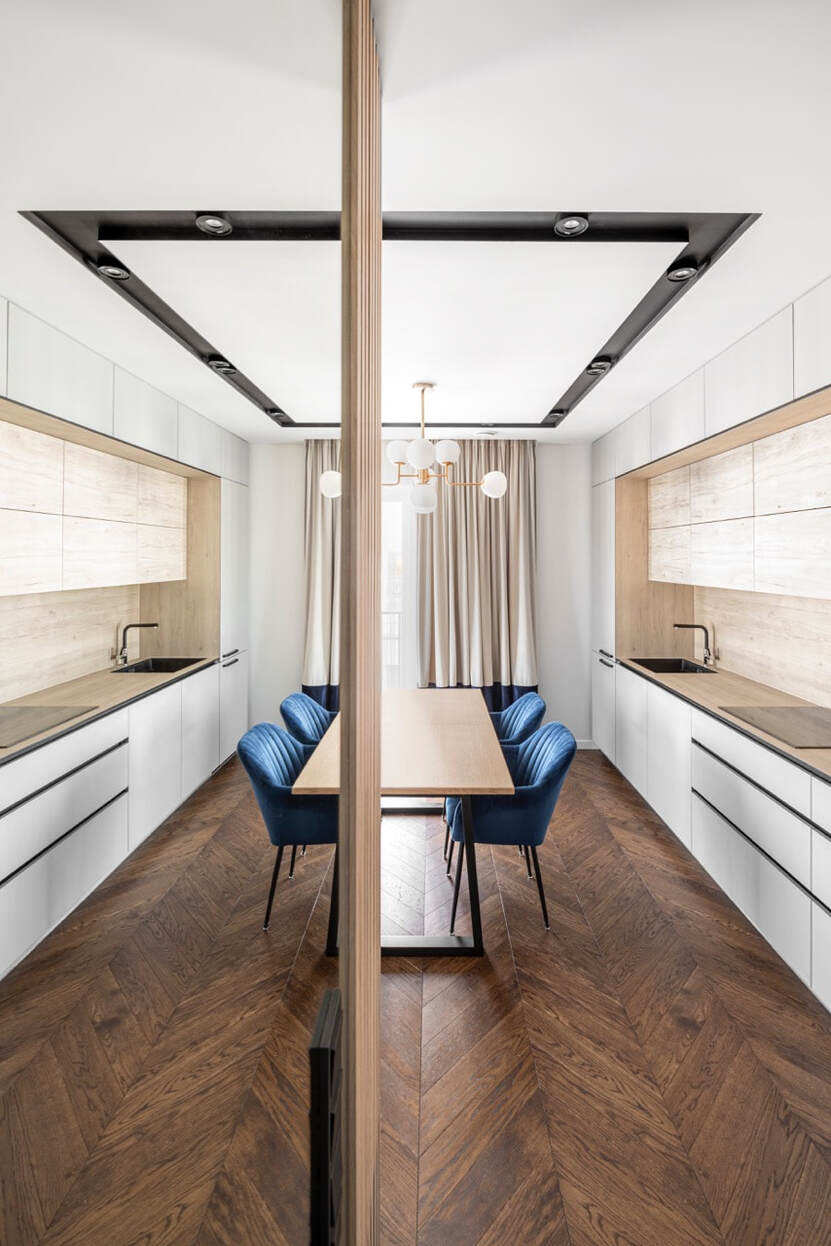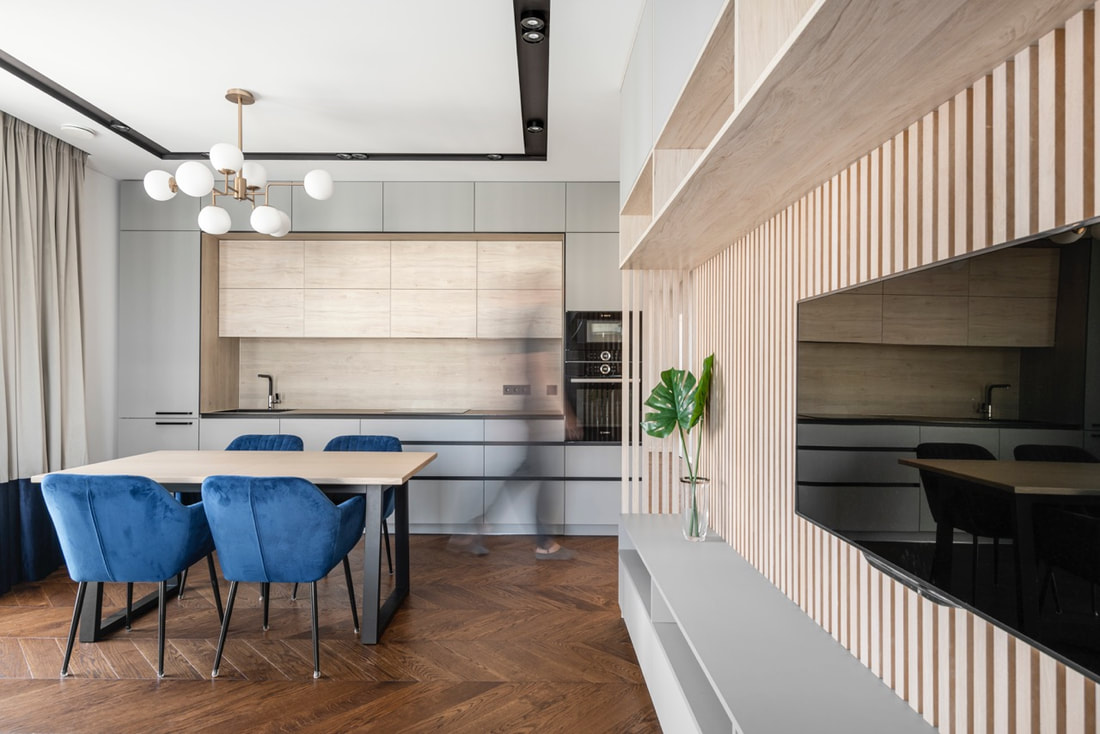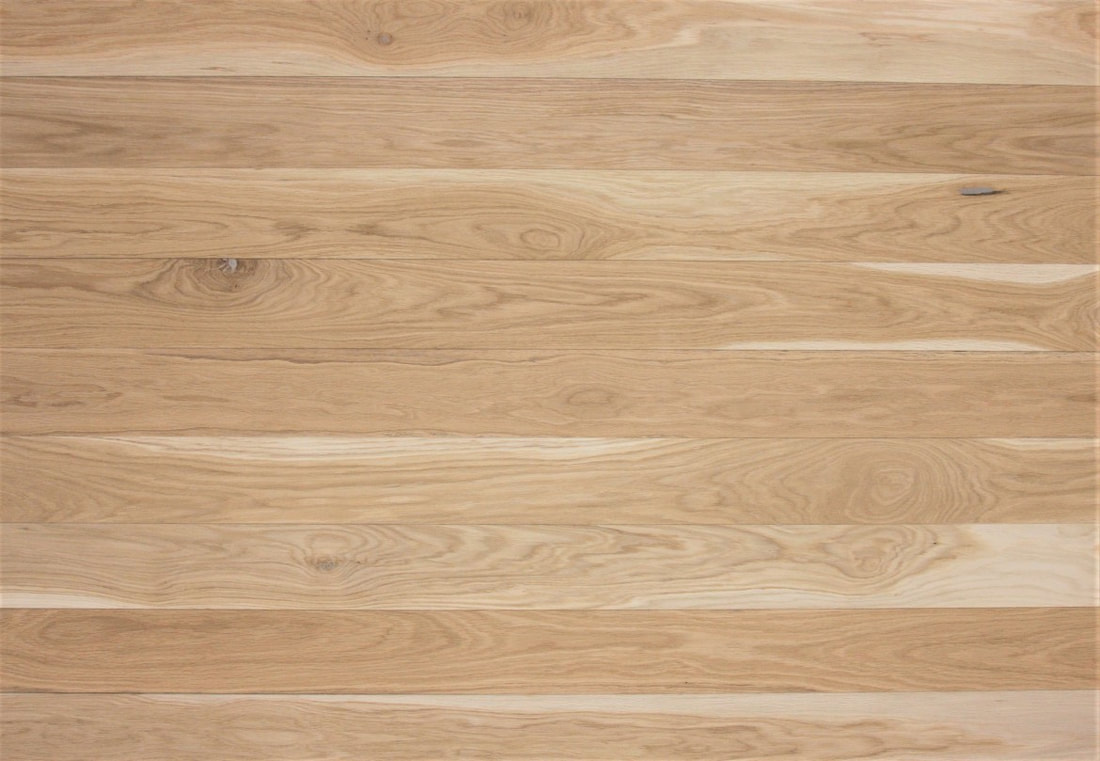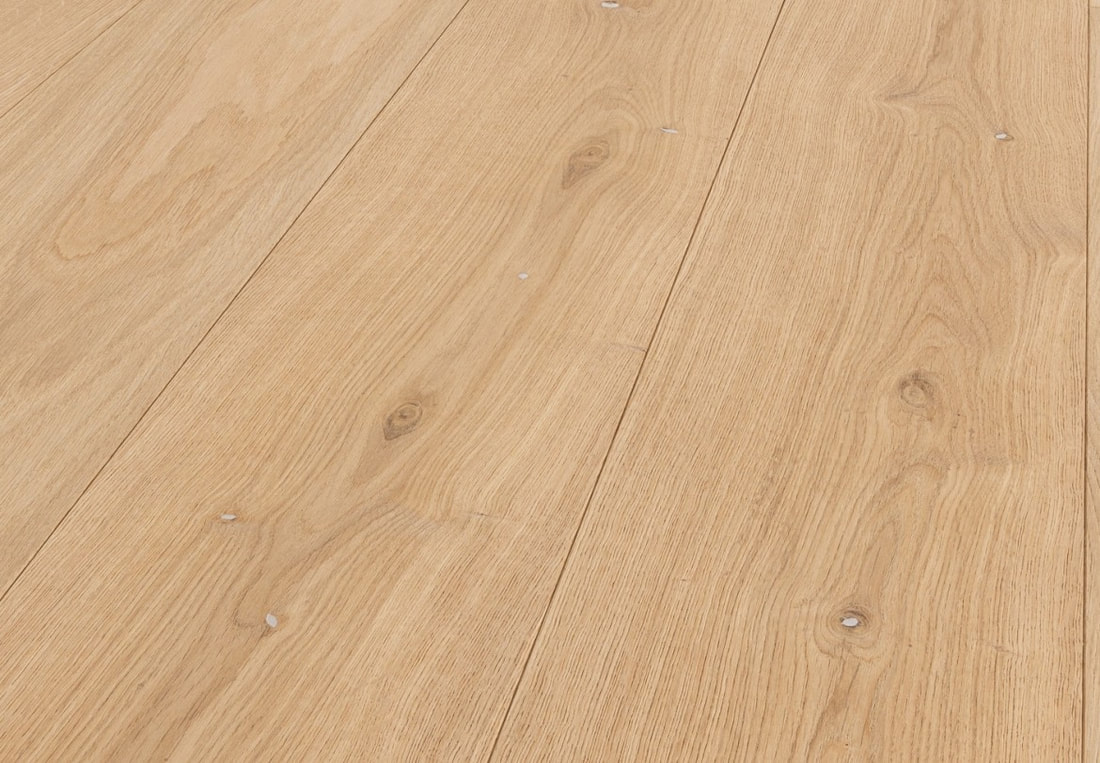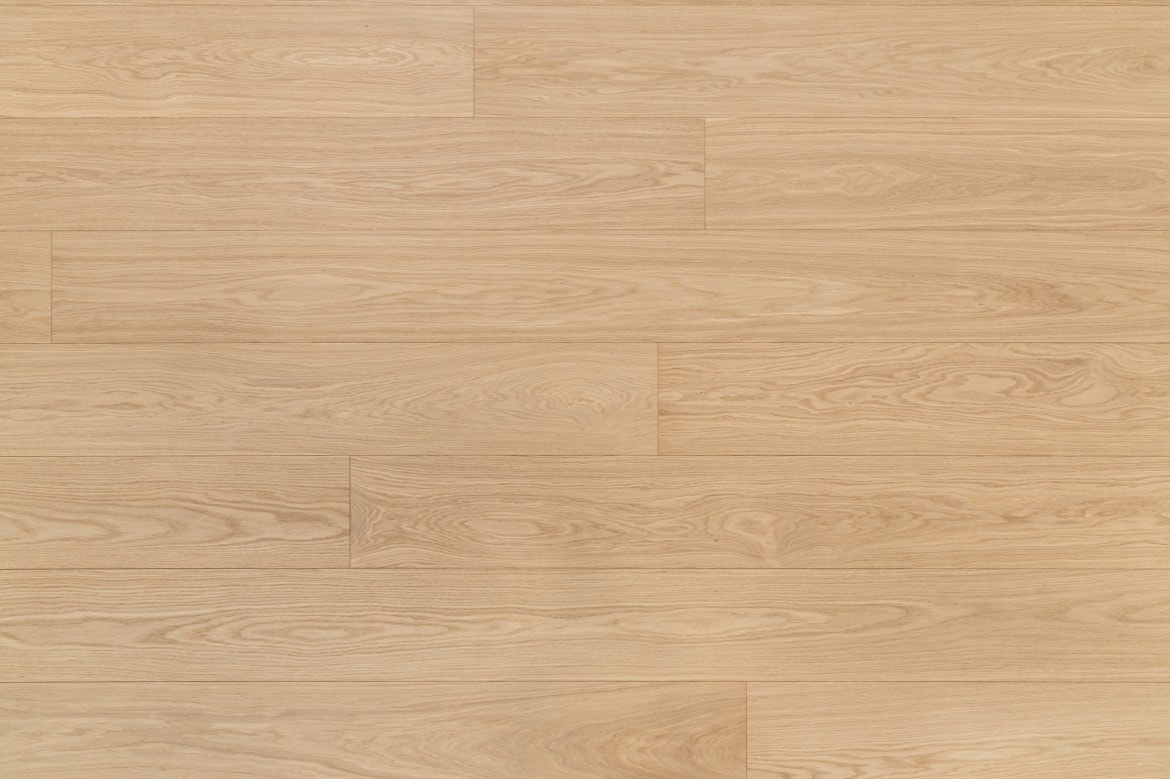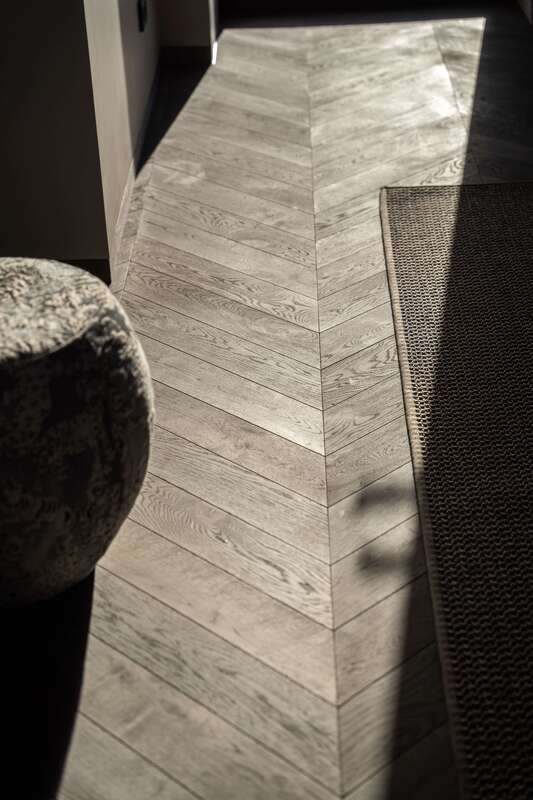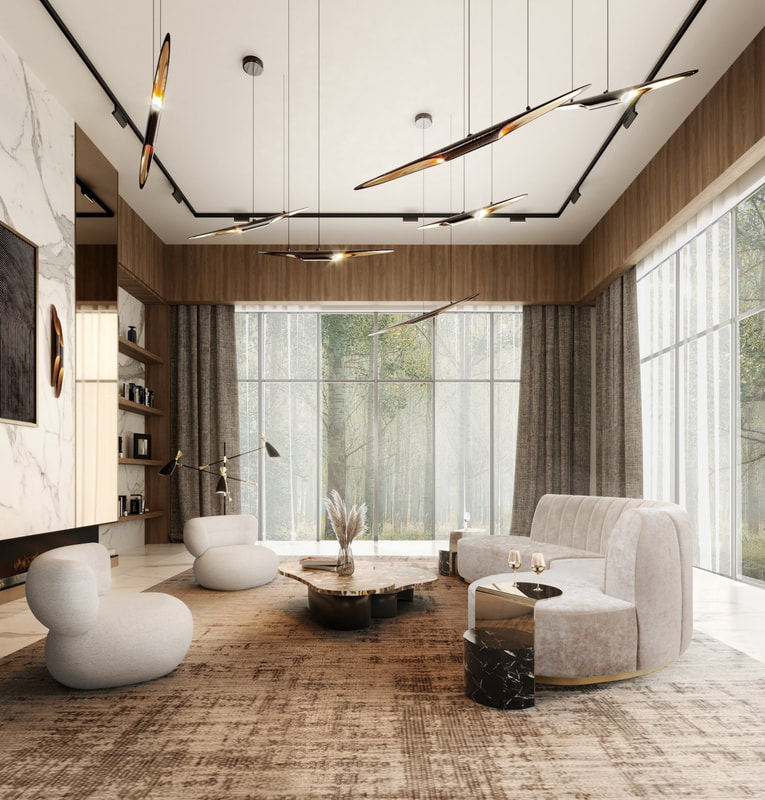|
When selecting the perfect wood flooring for your home or office, the choice often narrows down to a few outstanding options. Two such contenders are Ash wood and Douglas Fir wood flooring. Both types offer unique aesthetics, durability, and sustainability features, making them suitable for various interior styles. This article delves into the specifics of grain patterns, grades, color variations, durability, sustainability, and visual appeal to help you make an informed decision. Grain Pattern Ash Wood: Ash wood is renowned for its straight, uniform grain, often with occasional waves or curls. The texture is typically smooth, creating an elegant and refined look. The pronounced grain pattern of Ash makes it a favorite for those who appreciate a more vibrant and eye-catching floor. Douglas Fir: Douglas Fir wood showcases a distinct grain pattern characterized by its straight, pronounced lines. The grain is generally tighter and less wavy compared to Ash. This creates a consistent, linear appearance, which can be highly desirable for achieving a classic and timeless look. Grades and Color Variations Ash Wood: Ash wood flooring comes in various grades, from clear and select to common grades, each reflecting different levels of knots and imperfections. The color of Ash wood ranges from light blonde to medium brown, often with a pale yellow undertone. The natural variations in color can add a dynamic and lively feel to the flooring. Douglas Fir: Douglas Fir also offers a range of grades, including clear, select, and vertical grain grades. The color palette of Douglas Fir spans from a light amber to a rich reddish-brown, with age and exposure to sunlight often darkening the wood to a deeper hue. The consistent coloring and grain pattern contribute to a more uniform and sophisticated appearance. Durability Ash Wood: Ash is a hardwood, ranking 1320 on the Janka hardness scale. This makes it a robust and resilient choice for flooring, capable of withstanding heavy foot traffic and daily wear and tear. Its durability makes it suitable for both residential and commercial spaces. Douglas Fir: Douglas Fir, a softwood, has a Janka hardness rating of 660. While it is not as hard as Ash, it is still a strong and durable wood, particularly in the vertical grain grade. Douglas Fir can dent and scratch more easily than harder woods, so it may require more care in high-traffic areas. Sustainability Ash Wood: Ash trees grow relatively quickly, making Ash wood a more sustainable choice. However, the Emerald Ash Borer, a beetle that has devastated Ash tree populations in North America, raises concerns about the long-term availability and environmental impact of Ash wood harvesting. Douglas Fir: Douglas Fir is one of the most sustainably harvested softwoods in Europe. It grows abundantly and is often sourced from responsibly managed forests. The quick growth rate and widespread availability make Douglas Fir a highly sustainable option. Visual Appearance Ash Wood: Ash Wood Flooring brings a bright and airy feel to interiors, thanks to its light color and prominent grain. It works exceptionally well in contemporary and Scandinavian-style interiors, where a light, open, and natural aesthetic is desired. Ash's bold grain can also complement rustic and eclectic designs. Douglas Fir: Douglas Fir Wood Flooring exudes warmth and character with its rich color and subtle grain. It is ideal for traditional, farmhouse, and craftsman-style interiors, where a warm and inviting ambiance is preferred. The consistent grain and rich tones can also enhance modern and industrial spaces, adding a touch of organic warmth. Best Interiors for Each Type
Ash Wood Flooring:
Douglas Fir Wood Flooring:
Conclusion Choosing between Ash wood flooring and Douglas Fir wood flooring depends on your specific needs and aesthetic preferences. Ash offers a harder, more durable option with a striking grain and lighter color, perfect for modern and dynamic interiors. Douglas Fir, with its softer wood and warm, consistent grain, is ideal for traditional, farmhouse, and industrial designs. Both woods are sustainable choices, but the ecological impact of Ash may be a consideration due to the Emerald Ash Borer. Ultimately, both types of flooring provide unique benefits that can enhance the beauty and functionality of your space.
0 Comments
Solid wood flooring is more than just a surface to walk on; it’s an investment in the beauty and value of your home. If properly cared for, it can last for decades, or even centuries, carrying with it stories, memories, and a patina that only time can bestow. However, achieving that timeless appeal requires diligent care and a bit of insider knowledge. Whether you're a new homeowner or a seasoned pro, here's a comprehensive guide to help your solid wood flooring stay in pristine condition for years to come. Understanding Your Solid Wood Flooring Before diving into care techniques, it’s important to understand what solid wood flooring is. Unlike engineered wood flooring, which is made up of multiple layers of wood and plywood, solid wood flooring consists of single, solid pieces of wood. This makes it incredibly durable and capable of being refinished multiple times, but also means it’s more susceptible to changes in humidity and temperature.
The Golden Rules of Wood Floor Care Rule #1: Regular Cleaning Keeping your wood floors clean is the foundation of proper maintenance. Dirt and grit can act like sandpaper, scratching the surface of the wood and dulling its finish. Do:
Rule #2: Protect from Moisture Moisture is the number one enemy of solid wood flooring. Wood naturally expands and contracts with changes in humidity, and excessive moisture can cause serious damage. Do:
Rule #3: Prevent Scratches Scratches can mar the beauty of your solid wood flooring, but with a few preventative measures, they can be minimized. Do:
Rule #4: Refinish When Necessary One of the greatest benefits of solid wood flooring is the ability to refinish it multiple times. Refinishing can bring back the original beauty of your floors by removing surface scratches, stains, and renewing the finish. Do:
Lesser-Known Tips for Prolonging Wood Floor Life 1. Avoid Direct Sunlight Prolonged exposure to direct sunlight can cause wood floors to fade and discolour. Use curtains, blinds, or UV-protective window film to shield your floors from harsh sunlight. 2. Seasonal Maintenance Wood floors can be more vulnerable during seasonal changes. In winter, the air is drier, which can cause the wood to shrink. In summer, higher humidity can cause the wood to expand. Winter:
3. Use the Right Cleaning Products Stick to pH-neutral wood floor cleaners specifically designed for hardwood floors. Using the wrong products can strip the finish and damage the wood. 4. Rotate Rugs and Furniture Rotating your rugs and rearranging furniture periodically can prevent uneven wear and fading. This ensures that all parts of your floor age evenly and maintain a consistent appearance. 5. Mind the Gaps As wood expands and contracts with changes in humidity, small gaps can appear between the planks. These are normal and usually close up when humidity levels stabilize. If the gaps are large or persistent, it may be a sign of a humidity problem that needs addressing. Long-Term Care Strategies
Annual Inspection Perform an annual inspection of your floors to check for any signs of damage or wear. Look for scratches, dents, gaps, and any changes in colour or texture. Early detection of issues can prevent more significant problems down the road. Professional Cleaning Consider having your floors professionally cleaned once a year. Professional cleaners have the tools and expertise to deep clean your floors without causing damage, removing embedded dirt and grime that regular cleaning might miss. Polishing Polishing your wood floors can restore their shine and add a layer of protection. Use a polish specifically designed for hardwood floors and follow the manufacturer’s instructions carefully. Restoring Gloss Over time, the finish on your wood floors can become dull. Restoring the gloss can bring back the lustre and make your floors look new again. Options include using a floor polish or having a professional apply a new coat of finish. Funny Fact #3: Wood Floors and the Green Revolution Solid wood flooring is not just durable and beautiful; it's also environmentally friendly. Wood floors are a sustainable choice, as they can be refinished and last for generations. Plus, they help improve indoor air quality by not trapping dust and allergens. So, in a way, your floors are not only stylish but also helping save the planet! Common Myths About Wood Floor Care Myth #1: You Can't Use Water at All While excessive water is harmful, using a slightly damp mop is safe and effective for cleaning wood floors. The key is to use minimal water and dry the floor immediately. Myth #2: All Hardwood Floor Cleaners Are the Same Not all cleaners are created equal. Using the wrong cleaner can damage your floor's finish. Always use products specifically formulated for hardwood floors and follow the manufacturer's recommendations. Myth #3: Refinishing is Bad for Your Floors Refinishing is not harmful when done correctly and only when necessary. It actually prolongs the life of your floors by removing surface damage and renewing the protective finish. Conclusion Caring for your solid wood flooring doesn’t have to be a daunting task. With regular maintenance, mindful habits, and a bit of insider knowledge, you can keep your floors looking stunning and ensure they last for years to come. Remember, your floors are more than just a functional part of your home; they are a reflection of your style and a stage for countless memories. Treat them well, and they will reward you with timeless beauty and durability. So, whether you're moonwalking across the living room or hosting a cozy family gathering, your solid wood flooring will stand the test of time, providing a warm and elegant foundation for all of life’s moments. In the realm of interior design, few materials possess the timeless charm and character of reclaimed wood. This versatile medium, rich with history and imbued with a rustic allure, has captivated designers and homeowners alike for decades. From its sustainable qualities to its unique aesthetic appeal, reclaimed wood continues to reign supreme as a favoured choice for adding warmth and character to residential and commercial spaces alike. Understanding Reclaimed Wood Before delving into its myriad applications and sourcing methods, it's essential to grasp the essence of reclaimed wood. Simply put, reclaimed wood refers to lumber salvaged from old buildings, barns, warehouses, or other structures slated for demolition. This wood, often decades or even centuries old, carries with it a story—an intrinsic quality that sets it apart from freshly harvested timber. The Appeal of Reclaimed Wood Aesthetic Authenticity One of the most compelling aspects of reclaimed wood is its inherent authenticity. Each weathered plank bears the marks of time—nail holes, saw marks, and patina—that contribute to its unique character. These imperfections tell a story, evoking a sense of history and nostalgia that resonates with admirers of vintage aesthetics. Environmental Sustainability In an era increasingly defined by environmental consciousness, the sustainability of materials has become a paramount concern. Reclaimed wood offers a compelling solution to this dilemma. By repurposing lumber from existing structures, designers and homeowners can minimize the demand for new timber, thus reducing deforestation and the associated environmental impact. Durability and Stability Contrary to popular belief, reclaimed wood often surpasses its freshly harvested counterparts in terms of durability and stability. The aging process imbues the wood with a robustness that can withstand the tests of time, making it an ideal choice for both structural and decorative applications. Applications in Interior Design Wood Flooring One of the most popular uses of reclaimed wood in interior design is as a wood flooring and parquet flooringmaterial. Whether employed in a cosy cottage or a sleek urban loft, reclaimed wood flooring adds warmth, character, and visual interest to any space. Its varied hues and textures create a sense of depth and dimension, transforming ordinary floors into focal points of design. Wall Cladding From accent walls to entire room installations, reclaimed wood wall cladding has emerged as a prominent trend in contemporary interior design. Whether left raw or treated with a protective finish, the natural beauty of reclaimed wood lends a sense of warmth and intimacy to living spaces, restaurants, and retail environments alike. Furniture and Millwork The versatility of reclaimed wood extends beyond flooring and wall treatments to encompass furniture and millwork as well. From reclaimed barnwood tables to salvaged timber countertops, these bespoke pieces infuse spaces with a rustic elegance that is both inviting and timeless. Architectural Elements In addition to its decorative applications, reclaimed wood can also be utilized in structural elements such as beams, trusses, and posts. These architectural features not only lend a sense of authenticity to modern constructions but also serve as a nod to the past, bridging the gap between tradition and innovation Sourcing Reclaimed Wood
Salvage Yards Salvage yards are perhaps the most traditional source of reclaimed wood, offering a treasure trove of materials salvaged from old buildings and structures. While browsing through these eclectic collections, designers and homeowners can discover a diverse array of wood species, finishes, and dimensions to suit their specific needs. Reclaimed Wood Suppliers For those seeking a more curated selection of reclaimed wood, specialized suppliers offer a convenient alternative. These companies meticulously source, salvage, and prepare reclaimed wood for commercial distribution, ensuring quality and consistency across their product offerings. Demolition Sites In some cases, designers may have the opportunity to procure reclaimed wood directly from demolition sites. By collaborating with contractors and demolition teams, they can salvage lumber from upcoming projects, thereby securing a sustainable source of reclaimed wood while simultaneously reducing waste. Online Marketplaces In the digital age, online marketplaces have emerged as a convenient platform for buying and selling reclaimed wood. From antique planks to custom-made furniture, these virtual marketplaces connect buyers and sellers from around the world, facilitating the exchange of reclaimed wood and related products with ease. Conclusion In the ever-evolving landscape of interior design, reclaimed wood remains a steadfast symbol of authenticity, sustainability, and timeless elegance. From its weathered patina to its rich history, each plank tells a story—a narrative that continues to captivate designers and homeowners alike. As we strive to create spaces that are not only aesthetically pleasing but also environmentally responsible, reclaimed wood stands as a testament to the enduring allure of the past in shaping the future of design. Contact Hoff Parquet wood flooring showroom in Edinburgh for reclaimed oak wood flooring supply and installation quotes. Engineered wood flooring has become increasingly popular over the years due to its durability, aesthetic appeal, and cost-effectiveness. However, despite its growing popularity, there are still numerous myths and misconceptions surrounding this type of flooring. In this comprehensive guide, we will debunk these myths and provide you with accurate information about engineered wood flooring. Myth 1: Engineered Wood Flooring is Not Real Wood One of the most common misconceptions about engineered wood flooring is that it is not real wood. This couldn't be further from the truth. Engineered wood flooring is indeed made from real wood. The difference lies in the construction method. Unlike solid hardwood flooring, which is made from a single piece of wood, engineered wood flooring is constructed from multiple layers of wood veneer that are glued together. The top layer, known as the wear layer, is made from high-quality hardwood, while the lower layers are typically made from plywood or fibreboard. Myth 2: Engineered Wood Flooring is Less Durable Than Solid Hardwood Another prevalent myth is that engineered wood flooring is less durable than solid hardwood. In reality, engineered wood flooring is highly durable and can withstand fluctuations in temperature and humidity better than solid hardwood. The multiple layers of wood provide stability and strength, making engineered wood flooring less prone to warping, cupping, and other forms of damage. Additionally, the top layer of hardwood can be sanded and refinished multiple times, just like solid hardwood, allowing you to refresh its appearance and extend its lifespan. Myth 3: Engineered Wood Flooring Looks Cheap Some people believe that engineered wood flooring looks cheap compared to solid hardwood flooring. However, this is not the case. Engineered wood flooring comes in a wide range of styles, finishes, and wood species, allowing you to achieve the look you desire for your home. Whether you prefer the rustic charm of reclaimed oak or the sleek elegance of Brazilian cherry, there is an engineered wood flooring option to suit your taste and aesthetic preferences. Additionally, advancements in manufacturing technology have made it possible to create engineered wood flooring that closely resembles solid hardwood, making it difficult to distinguish between the two. Myth 4: Engineered Wood Flooring Cannot Be Refinished
Contrary to popular belief, engineered wood flooring can be refinished, albeit with some limitations. The number of times you can refinish engineered wood flooring depends on the thickness of the top wear layer. Thicker wear layers allow for more refinishing cycles, while thinner wear layers may only withstand one or two refinishing sessions. However, even with a thin wear layer, engineered wood flooring can still be recoated to refresh its appearance without sanding down to the bare wood. It's essential to consult with a professional flooring contractor to determine the best refinishing approach for your specific flooring. Myth 5: Engineered Wood Flooring is Not Environmentally Friendly Some people believe that engineered wood flooring is not environmentally friendly because it is made from multiple layers of wood and adhesive. While it's true that the manufacturing process involves glue and wood composite materials, engineered wood flooring is still considered to be an eco-friendly flooring option. Many manufacturers use sustainable harvesting practices and source their wood from responsibly managed forests. Additionally, the construction of engineered wood flooring often makes more efficient use of raw materials compared to solid hardwood, reducing waste and minimizing environmental impact. Conclusion Engineered wood flooring offers numerous benefits, including durability, versatility, and eco-friendliness. By debunking these common myths, we hope to provide you with a better understanding of this popular flooring option. Whether you're renovating your home or building a new one, engineered wood flooring is worth considering for its beauty, performance, and value. Remember to choose a reputable manufacturer and consult with a flooring professional to ensure you select the right product for your needs. With proper care and maintenance, engineered wood flooring can provide you with a beautiful and long-lasting floor for many years to come. Hoff Parquet your premier wood flooring supplier and installer, contact us for samples or visit our beautiful wood flooring showroom in Edinburgh! As an experts, we constantly on the lookout for materials that blend timeless charm with contemporary style. One such gem in the flooring world is the bleached grey wooden floor. Renowned for its versatility and serene aesthetic, this colour option offers a unique foundation for various interior designs. At Hoff Parquet, we understand the transformative power of the right flooring. That's why our bleached grey finish is meticulously crafted to elevate any space, available in an array of sophisticated patterns including chevron parquet, herringbone parquet, Versailles parquet, and standard straight engineered oak planks. Why Choose Bleached Grey Wooden Floors? Subtle Sophistication: Bleached grey floors possess a subtle sophistication that complements any decor style. This neutral hue serves as a serene backdrop that can make your furniture and decor elements truly pop. Whether your space is filled with bold colours or more understated tones, bleached grey floors provide balance and harmony. Versatility in Design: This floor colour is incredibly versatile, suitable for various interior themes from modern minimalist to rustic chic. It can bridge the gap between different materials and textures, allowing for design flexibility throughout your home or commercial space. Enhances Natural Light: If you're aiming to make a room feel more spacious and airy, bleached grey is an excellent choice. It reflects natural light better than darker floors, contributing to a brighter, more open feel in any room. Ideal Interiors for Bleached Grey Colour Wooden Floors Modern and Contemporary Spaces: In modern interiors, where clean lines and neutral tones dominate, bleached grey floors fit seamlessly, enhancing the contemporary feel without overpowering the design elements. Scandinavian and Coastal Designs: The light hue of bleached grey flooring is perfect for Scandinavian-inspired interiors, which emphasize light, simplicity, and natural elements. Similarly, for coastal styles that channel a fresh, breezy atmosphere, these floors are a natural fit, echoing the colours of sandy beaches and driftwood. Elegant Traditional Interiors: Even in more traditional settings, bleached grey can work wonders. It brings a fresh twist to classic interiors without detracting from the elegance or historical vibes of the space. Hoff Parquet’s Exclusive Patterns At Hoff Parquet, we pride ourselves on our craftsmanship and variety. Our bleached grey wooden floors are available in several exquisite patterns: Chevron Parquet: For a dynamic, pointed beauty that guides the eye and elongates the space, our chevron pattern is an excellent choice. Herringbone Parquet: This classic pattern offers timeless appeal, adding texture and interest to any room. Versailles Parquet: Bring a touch of royal grandeur to your space with our Versailles pattern, which is intricate and stately. Straight Engineered Oak Planks: For those who prefer a sleek, modern look, our straight planks provide clean lines and an uncluttered aesthetic. Choosing the right flooring is essential as it serves as the canvas upon which you paint your space’s personality. Hoff Parquet’s bleached grey wooden floors offer a perfect blend of durability, beauty, and versatility, making them an ideal choice for any interior design project. Whether you’re renovating a home or designing a commercial space, consider how our exclusive floor patterns can enhance your design vision.
Explore the possibilities with Hoff Parquet and transform your space with floors that offer both beauty and lasting quality. Oiling wood floors is an art that marries tradition with modern necessity, ensuring the longevity, beauty, and resilience of one of the most cherished elements in any space. Wood floors bring warmth, character, and a slice of nature's serenity into our homes and workplaces. However, to maintain their allure and integrity, a proper maintenance routine, including regular oiling, is paramount. This article delves into the nuances of how often to oil wood floors, the selection of oils, and the application techniques that promise to keep your floors splendid through the years. Understanding the Need for Oiling Wood Floors Wood, being a natural and porous material, requires periodic nourishment and protection to prevent it from drying out, cracking, or becoming susceptible to damage from spills and wear. Oiling penetrates deep into the wood, replenishing its natural oils, enhancing its grain and color, and providing a protective layer that makes it more resilient against moisture and daily use. Determining the Frequency of Oiling The frequency of oiling wood floors is influenced by several factors, including the type of wood, the finish, the level of foot traffic, and the specific conditions of the environment (such as humidity levels). Here are general guidelines: Initial Treatment: Newly installed or freshly sanded wood floors should receive two to three coats of oil initially, allowing sufficient drying time between applications. Regular Maintenance: For residential spaces with moderate foot traffic, oiling once every one to two years is typically adequate. High-traffic areas like commercial spaces or homes with pets and children might require more frequent attention, potentially every six to twelve months. Spot Maintenance: Areas that show signs of wear or dryness can be spot-treated as needed, without waiting for the full floor to be oiled. Choosing the Right Oil The market offers a plethora of options, from natural oils like linseed and tung oil to hardwax oils that combine natural oils and waxes for added durability. The choice depends on the desired finish, the specific characteristics of the wood, and personal preference regarding maintenance and environmental impact. Natural Oils: Provide a deep, rich finish that enhances the wood's natural beauty but may require more frequent reapplication. Hardwax Oils: Offer a balance between the natural look and a more durable finish, suitable for areas with higher foot traffic. Application Techniques for Optimal Results Applying oil to wood floors is a meticulous process that, when done correctly, yields stunning results. Here's a condensed guide: Preparation: Ensure the floor is clean, dry, and free of any previous finishes or contaminants. Sanding might be necessary for older floors to remove the old finish and smooth out imperfections. Application: Using a brush, roller, or cloth, apply the oil in thin, even coats. Work in manageable sections and maintain a wet edge to avoid overlap marks. Follow the grain of the wood for a seamless finish. Drying and Curing: Allow sufficient drying time between coats, as recommended by the oil manufacturer. The floor should be left undisturbed during this period. Full curing can take up to several days, during which the floor should be treated gently. Maintenance: Regular cleaning with suitable products and prompt attention to spills and stains will prolong the intervals between oiling and preserve the floor's beauty. The Art of Living with Oiled Wood Floors
Oiled wood floors embody a lifestyle choice that values natural beauty, craftsmanship, and sustainability. By adhering to a thoughtful maintenance regimen, you ensure that your floors remain a living testament to these values, aging gracefully and growing more beautiful with time. Remember, the frequency of oiling is not just about preserving the wood; it's about enriching your living space with a floor that tells a story of care, respect, and love for the natural world. In the realm of home design, few elements exude warmth, elegance, and timelessness quite like hardwood flooring. In Edinburgh, where history meets modernity, the choice of flooring is not merely a practical consideration but a statement of style and quality. Amidst the options available, engineered wood flooring stands out as the premier choice for discerning homeowners seeking both aesthetic appeal and functional superiority.
Here are several compelling reasons why engineered wood flooring surpasses solid wood flooring for homes in Edinburgh: Adaptability to Climate: Edinburgh's weather can be notoriously unpredictable, with humidity and temperature fluctuations throughout the year. Engineered wood flooring, constructed from layers of real wood bonded together with adhesives, offers superior stability compared to solid wood. Its layered structure minimises expansion and contraction, making it less prone to warping, cupping, or gaps, even in Edinburgh's varied climate conditions. Durability and Resilience: Engineered wood flooring boasts exceptional durability, making it ideal for high-traffic areas in homes. The layers of hardwood and plywood create a strong, stable core that can withstand impacts, scratches, and everyday wear and tear. This durability ensures that your flooring investment maintains its pristine appearance for years to come, even in a bustling city like Edinburgh. Versatility in Design: Whether your home in Edinburgh exudes traditional charm or contemporary flair, engineered wood flooring offers a versatile array of styles and finishes to complement any aesthetic. From rich oak to exotic walnut, engineered wood comes in a diverse range of species, colours, and textures, allowing you to tailor your flooring to suit your interior design preferences seamlessly. Ease of Installation: Engineered wood flooring's innovative design facilitates straightforward installation, even in Edinburgh's older homes where subfloor conditions may be less than perfect. Its tongue-and-groove locking systems enable precise fitting, whether opting for floating, glue-down, or nail-down installation methods. This efficiency translates to reduced installation time and costs, ensuring minimal disruption to your household routine. Environmental Sustainability: Conscious consumers in Edinburgh prioritize environmentally friendly options for their homes. Engineered wood flooring, crafted from responsibly sourced hardwood veneers and sustainable plywood, offers a greener alternative to solid wood. By maximising the use of hardwood resources, engineered wood minimises waste while maintaining the natural beauty and integrity of hardwood floors. Cost-Effectiveness: While solid wood flooring commands a premium price tag, engineered wood flooring delivers comparable aesthetics and performance at a more affordable cost. Its construction from hardwood veneers atop plywood substrate achieves the luxurious look of solid wood without the associated expense. For Edinburgh homeowners seeking exceptional value without compromising on quality, engineered wood flooring proves to be the savvy choice. Low Maintenance Requirements: In a city as vibrant as Edinburgh, where residents lead active lifestyles, low-maintenance flooring solutions are highly prized. Engineered wood flooring requires minimal upkeep, with routine sweeping and occasional mopping sufficient to keep it looking pristine. Its durable finish resists stains and spills, simplifying cleaning tasks and allowing you more time to enjoy the splendors of Edinburgh life. In conclusion, engineered wood flooring emerges as the preeminent choice for Edinburgh homes, marrying timeless elegance with modern innovation. Its resilience, adaptability, and aesthetic versatility make it a compelling flooring solution for homeowners seeking the perfect blend of style and functionality. With engineered wood flooring, you can elevate your Edinburgh abode with flooring that not only withstands the test of time but also enhances the beauty and comfort of your living space for generations to come. Visit our Hoff Parquet Wood Flooring Showroom In Edinburgh to view full range of top quality wooden floors and parquet flooring. Nestled in the heart of bustling cities, SoHo apartments embody a unique blend of contemporary living and urban sophistication. Characterised by their industrial-chic aesthetic and compact layouts, these spaces offer endless opportunities for creative interior design. One element that can elevate the ambiance of a SoHo interior is chevron parquet flooring. With its timeless elegance and versatility, chevron parquet flooring adds a touch of luxury and visual interest to any space. In this article, we'll explore how to create the perfect SoHo interior using chevron parquet flooring as the focal point. Understanding SoHo Style: Before delving into the specifics of incorporating chevron parquet flooring, it's essential to grasp the essence of SoHo style. SoHo interiors are known for their industrial-inspired design elements, exposed brick walls, open floor plans, and large windows that flood the space with natural light. The aesthetic is a balance between modern minimalism and rustic charm, creating an inviting atmosphere that reflects the vibrant energy of city living. Choosing Chevron Parquet Flooring: Chevron parquet flooring is a classic choice that complements the sleek, contemporary look of SoHo interiors. Unlike traditional hardwood flooring, chevron parquet features a distinctive zigzag pattern that adds visual interest and depth to the space. When selecting chevron parquet flooring, opt for high-quality hardwood such as oak or walnut, as these materials not only enhance the aesthetic appeal but also ensure durability and longevity. Creating a Cohesive Colour Palette: To achieve a harmonious SoHo interior, it's crucial to establish a cohesive colour palette that complements the chevron parquet flooring. Neutral tones such as whites, greys, and earthy hues serve as an ideal backdrop, allowing the rich tones of the hardwood flooring to stand out. Consider incorporating accents of bold colours such as deep blues or emerald greens through furniture pieces or decorative accessories to add personality and depth to the space.
Embracing Minimalist Furnishings: In SoHo interiors, less is often more when it comes to furnishings. Embrace minimalist furniture designs with clean lines and sleek finishes to maintain the open and airy feel of the space. Opt for pieces with a modern aesthetic, such as streamlined sofas, geometric coffee tables, and mid-century-inspired dining chairs. Keep the furniture arrangement simple and uncluttered to maximise the flow of the room and highlight the beauty of the chevron parquet flooring. Incorporating Textural Elements: To add warmth and texture to the SoHo interior, incorporate a variety of tactile elements such as plush area rugs, soft throws, and textured upholstery fabrics. Layering different textures creates visual interest and makes the space feel cosy and inviting. Consider introducing natural elements such as leather, wool, and raw wood to enhance the rustic charm of the chevron parquet flooring. Accentuating with Statement Pieces: To infuse personality and style into the SoHo interior, incorporate statement pieces that serve as focal points in the room. Whether it's a striking pendant light fixture, an eye-catching piece of artwork, or a sculptural accent chair, choose items that reflect your personal taste and add character to the space. These statement pieces not only enhance the visual appeal of the room but also create a sense of individuality within the SoHo aesthetic. Incorporating chevron parquet flooring into a SoHo interior is a timeless design choice that adds sophistication and charm to the space. By understanding the principles of SoHo style and carefully curating furnishings and accessories, you can create a perfect balance of elegance and urban flair. With its distinctive pattern and luxurious appeal, chevron parquet flooring transforms any SoHo apartment into a stylish sanctuary that exudes modern sophistication. When it comes to selecting wood flooring for your home, understanding the different grades of wood is crucial in making an informed decision. As a professional interior designer and wood flooring industry expert, I will delve into the intricacies of Rustic, Natural, and Premium grade wood flooring, including the unique characteristics of parquet flooring. This comprehensive guide aims to equip you with the knowledge to choose the perfect wood flooring that aligns with your aesthetic preferences and practical requirements. Rustic Grade Wood Flooring Rustic grade wood flooring, also known as Character grade, celebrates the natural imperfections and variations inherent in wood. This grade is characterised by its prominent grain patterns, knots, colour variations, and even mineral streaks. The charm of Rustic grade flooring lies in its ability to bring a warm, earthy, and authentic feel to any space, making it an ideal choice for homes aiming for a cosy, cottage-like or traditional ambience. Pros: Authentic Appearance: It offers a natural and authentic look that adds character to your space. Cost-Effective: Generally more affordable than higher grades, making it a budget-friendly option without compromising on the warmth and beauty of real wood. Durability: The presence of knots and variations can, in some cases, enhance the wood's durability, making it suitable for high-traffic areas. Cons: Inconsistency: The varied patterns and knots might not appeal to those seeking a uniform look. Maintenance: Might require more maintenance to ensure the knots and grooves do not collect dust or debris. Natural Grade Wood Flooring Natural grade wood, sitting between Rustic and Premium, strikes a balance by offering some character while maintaining a more uniform appearance. It includes subtle variations in colour and grain, along with smaller knots than those found in Rustic grade. Natural grade wood flooring is versatile and can complement both contemporary and traditional interiors, providing a harmonious blend of natural beauty and refinement. Pros: Balanced Aesthetics: It offers a perfect compromise between character and consistency, making it suitable for a wide range of interior styles. Moderately Priced: While slightly more expensive than Rustic grade, it remains an affordable option for those seeking a bit more uniformity in their flooring. Practical: It's a practical choice for those who appreciate wood's natural beauty but prefer a slightly more consistent look. Cons: Limited Character: May not satisfy those who desire the distinct character of Rustic grade or the flawless finish of Premium grade. Variation: Some batches may still have noticeable variations, which could be a concern for those seeking a more uniform appearance. Premium Grade Wood Flooring Premium grade wood flooring, often referred to as Select or Prime grade, is the epitome of elegance and uniformity in wood flooring. It features minimal knots, consistent grain patterns, and a uniform colour palette. This grade is meticulously selected to ensure the highest quality and is ideal for creating a sleek, sophisticated, and modern interior. Pros: Elegant Appearance: Offers a clean, refined look with minimal imperfections, suitable for luxurious and contemporary spaces. Increased Property Value: High-quality finish can contribute to the overall value of your property. Longevity: Less likely to harbour dust and debris due to the smooth finish, contributing to its durability. Cons: Cost: Premium grade wood is the most expensive, reflecting its high quality and uniformity. Less Character: May lack the warmth and natural character found in Rustic and Natural grades. Choosing the Right Grade for Your Home
When selecting the grade of wood flooring for your home, consider the following: Aesthetic Preference: Your personal style and the overall design theme of your home should guide your choice. Rustic grade adds warmth and character, Natural grade offers a balanced look, and Premium grade provides a sleek and refined finish. Lifestyle and Usage: Consider the level of foot traffic and the activities in the space. Rustic and Natural grades can better conceal wear and tear, making them suitable for family homes and high-traffic areas. Budget: Balance your aesthetic preferences with your budget. Rustic grade offers value and character, Natural grade is a middle ground, and Premium grade is an investment in luxury and uniformity. In conclusion, the choice between Rustic, Natural, and Premium grade wood flooring depends on your personal style, practical requirements, and budget. Each grade offers its unique charm and benefits, making it important to consider what aligns best with your vision for your home. As an expert in the field, I encourage you to embrace the natural beauty of wood flooring, allowing it to enhance the warmth and character of your living spaces. Visit Hoff Parquet wood flooring showroom in Edinburgh, for professional advice on how to chose perfect flooring for your project. In the world of interior design, Italian style stands as a paragon of elegance, blending rich history with contemporary flair. As an Italian interior designer and a wood flooring expert, I am privileged to share insights into this fascinating and luxurious domain. The role of wood flooring, especially parquet, in Italian interiors is not merely functional; it's a statement of art, history, and craftsmanship. The Italian Interior Design Philosophy Italian interior design is characterized by its attention to detail, use of high-quality materials, and a harmonious blend of old and new. It’s about creating a space that feels both luxurious and comfortable, combining traditional elements like ornate furniture and modern touches like sleek lines and minimalist decor. The essence lies in creating a balance that reflects both the rich heritage and the contemporary Italian lifestyle. Wood Flooring in Italian Interiors Wood flooring is a quintessential element in Italian design. It brings warmth, character, and a natural elegance to any space. In Italy, wood floors are not just a choice; they are a legacy, reflecting centuries of craftsmanship and design evolution. Types of Wood Used: Commonly used woods in Italian interiors include oak, walnut, and chestnut. Each offers a unique grain, colour, and texture, allowing for a range of aesthetics from rustic to modern. Parquet Flooring: Parquet is particularly revered in Italian design. It's not just flooring; it's a form of art. Traditional patterns like herringbone parquet pattern and chevron parquet pattern are popular, reflecting the Renaissance period's influence. Contemporary designs often experiment with geometric patterns and mixed materials, showcasing innovation in this age-old art form. Finishes and Treatments: Italian wood floors often feature hand-crafted finishes. From oiling and waxing to brushing and smoking, each treatment enhances the wood’s natural beauty and longevity. Role of Parquet in Italian Interiors
Parquet flooring holds a special place in Italian interiors. It embodies the essence of Italian craftsmanship and design philosophy. Artistic Expression: Parquet allows for artistic expression. Intricate patterns and designs are not merely about aesthetics; they tell stories, reflect histories, and articulate the homeowner's personality. Versatility: Parquet flooring fits seamlessly into various interior styles, from classic villas to modern apartments. Its adaptability makes it a favourite among Italian designers. Sustainability: There’s a growing emphasis on sustainability in Italian design. Parquet made from responsibly sourced wood and eco-friendly practices aligns with this ethos, making it a preferred choice. Italian interior design, with its rich heritage and innovative future, continues to enchant the world. Wood flooring, particularly parquet, plays a pivotal role in this narrative. As experts in Italian interiors and wood flooring, we understand the importance of quality, craftsmanship, and sustainable practices. In every plank and pattern, there lies a piece of Italian artistry, waiting to transform spaces into elegant, timeless homes. |
|
- Home
-
Products
- Engineered Wood Flooring >
- Solid Wood Flooring
- Chevron Parquet
- Herringbone Parquet
- Wide Plank Wood Flooring
- Live Edge Wood Flooring
- Ash Wood Flooring
- Douglas Fir Wood Flooring
- Walnut Wood Flooring
- Versailles Parquet
- Design Parquet Panels
- Mansion Weave Parquet
- Reclaimed Oak Wood Flooring
- Wood Cladding
- Charred Wood
- Wood For Stairs
- Unfinished Wood Flooring >
- Acoustic Wall Panels
- Architectural Details
- Bespoke Wood Flooring
- Services
- Information
- BLOG
- Gallery
- Contact
- Trade Program
About Hoff ParquetHOFF PARQUET - hardwood flooring supplier based in Edinburgh. We are your go-to company for the best real wooden floors like Chevron Parquet and Herringbone Parquet, Engineered and Solid Wood Flooring for any residential or commercial project. Our dream is to create unique luxury hardwood elements including flooring, wood for wall cladding, wood for stairs and bespoke parquetry.
Hoff Parquet - think GREEN. We were inspired to create a greener and more environmentally friendly company and product inventory. Only the highest quality eco friendly materials used for our wood flooring products and during the installation process. Our custom-made flooring made by experienced craftsmen offers premium quality, trendy shapes and colours. In collaboration with interior designers and architects we create the flooring which becomes a truly unique interior detail. We hereby confirm that all our wood flooring products are made in the European Union. Furthermore, all our wood materials are backed with FSC (Forest Stewardship Council) and PEFC (Programme for the Endorsement of Forest Certification Schemes) manufacturers' certificates, ensuring that our products meet the highest standards of sustainability and environmental responsibility. We are always open for innovations, new contacts and we are constantly in search for new partners! |
|
© COPYRIGHT 2024 ALL RIGHTS RESERVED.
















